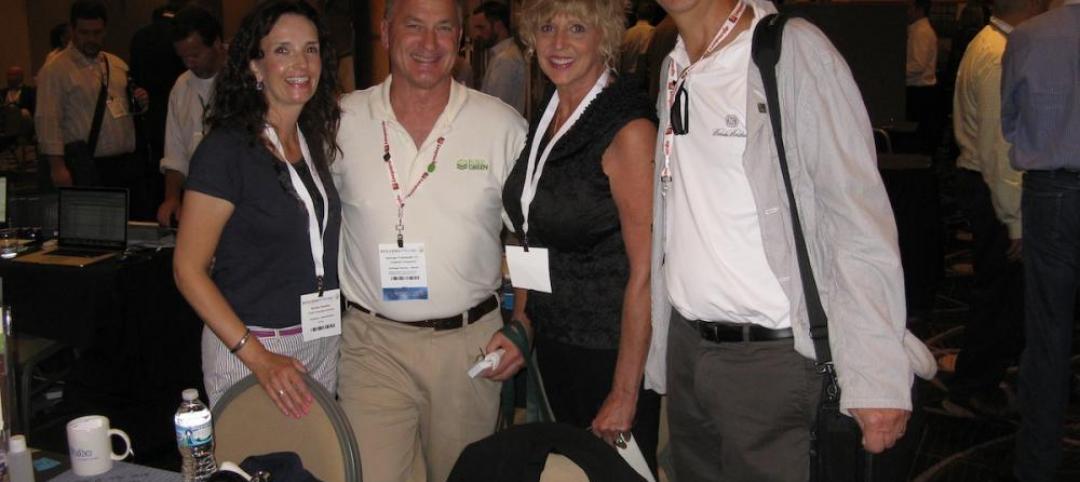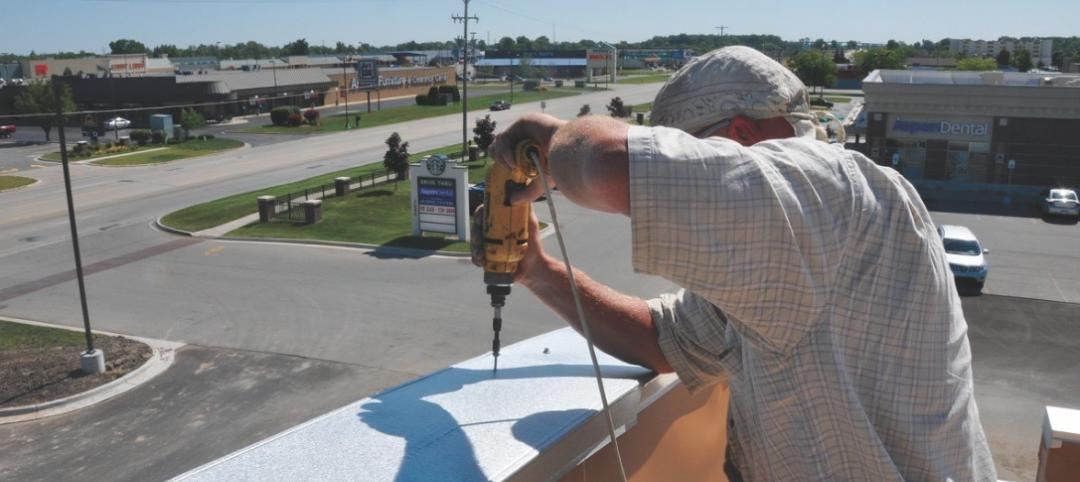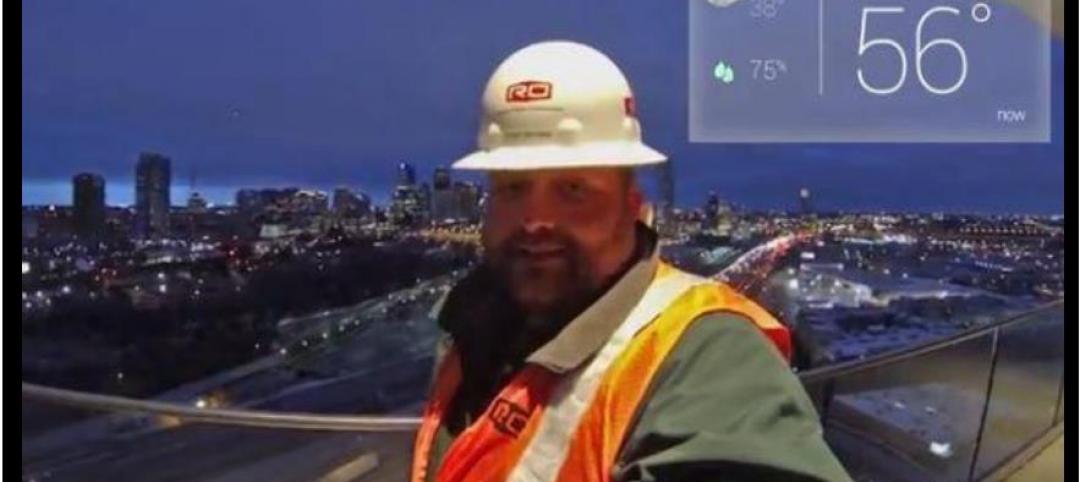SSOE Group, an international engineering, procurement, and construction management firm headquartered in Toledo, Ohio, recently completed the reconstruction of two Ford Motor Co. plants. The key to the project’s success was the use of new laser scanning technology that allowed the SSOE-led Building Team to capture untold millions of data points for integration into the 3D design model, thereby saving the client significant amounts of time and money.
Ford determined the two plants had exceeded their designed lifespans and opted to reconstruct and upgrade them rather than build new. All members of the Building Team—SSOE, laser-scanning vendor Troy Design & Manufacturing, Redford, Mich., Walbridge Construction Co., Detroit, and UK software developer Pointools Ltd.—had prior experience with laser scanning technology on smaller projects. What was daunting about these projects was the sheer size, totaling about 200,000 sf.
“Ford wanted us to work within their ‘as constructed’ environments, meaning we would be designing inside existing structures that needed to be cleared of old equipment,” says Joe Gerweck, project manager for SSOE Group.
Ford also required the Building Team to work with point cloud technology to reduce the number of construction coordination conflicts. To create the data points, the Building Team used a 3D laser scanner to capture the point clouds of existing equipment and construction in the plants.
LET THE TROUBLESHOOTING BEGIN!
Once the Building Team was defined, SSOE was tasked as the model integrator during the bid and construction phases to ensure the proper utilization of the 3D models and laser scans. This involved confirming software compatibility between subcontractors supplying 3D elements and collaborating the design intent, construction models, and laser scans.
Much to the surprise of the Building Team, there were few problems regarding software compatibility between the members of the Building Team.
“As with any new endeavor, there are always compatibility issues that need to be identified and resolved,” says Gerweck, who notes that, because point cloud technology and the supporting software are still in their infancy, there is no standard that exists between the technology vendors. “This limits the compatibility some, but it was not to the detriment of the Ford projects,” he says.
Having sidestepped the software compatibility problem, the next step for the Building Team was to scan the two manufacturing plants. This represented the most critical aspect of the job because these scanned data points would be used to compare and coordinate with new construction designs.
Traditional scanning methods and equipment were utilized for both Ford reconstruction projects. According to Neil Wakeman, SSOE Group’s BIM/CAD technical leader, stationary laser scanners on tripods were strategically mapped to encompass an area depending on the density or detail requested by the design engineers. The resulting data points were then imported into manageable files per building bay. The point clouds were then cleaned up and ultimately became the basic content used to create the reconstruction designs.
Architectural drawings utilized screen shots of the laser scans to identify elements for demolition versus elements that were to be reproduced in CAD. When using CAD, it is up to the user to interpret what they see on the screen, and identify it as a real world object such as a beam or column.
The laser scanning process, from on-site scanning to cleaning and organizing the raw scans into manageable files for the Building Team, was utilized during all phases of construction. This allowed improvements to the construction schedule, preplanning, and final design conducted by the Building Team both in the field and in the office.
LESSONS LEARNED ABOUT WORKING REMOTELY
Following the scans, the data was then integrated within the 3D modeling software, providing the Building Team with both a visual reference and actual reference to locate points in the 3D digital space. The result was the basis of the designs for updating the two Ford facilities. The entire Building Team was able to virtually see the design intent models, fabrication models, and laser scans overlaid in Navisworks for discussion before anything was assembled in the field.
Once the data points from the scans were transferred to the 3D modeling environment, the Building Team now had the capability to measure points and elevations virtually from a remote office during reconstruction. The scans from the Ford facilities were also used to coordinate the new utility layout with the existing utilities for such systems as HVAC, compressed air piping, coolant piping, domestic water piping, steam piping, electrical bus ducts, and electric cable tray. This resulted in a reduction of the number of hours the Building Team spent in the field verifying existing site conditions.
“The laser scanning technology was very effective,” says Gerweck. “During the design phase, it was much more efficient to review the laser scan results than to travel many hours to verify field conditions.”
Although having the laser scans reduced the number of overall trips to the job sites, thereby saving the client money in the long run, some site visits were still unavoidable. “It’s always beneficial for the Building Team to visit the site because there are instances where the laser scan does not fully describe the actual site condition based upon where the tripod was located for the scan,” says Gerweck.
During the laser scanning process, the Building Team learned another valuable lesson—that rescanning the buildings after the manufacturing equipment was removed proved to be much more efficient and accurate than editing the point clouds by hand to reflect the conditions prior to the new design. Wakeman says SSOE will be certain to incorporate this bit of wisdom into future scanning projects.
Perhaps the most important lesson from this case study is that, while the learning curve associated with new technology can be intimidating, once the Building Team is on same page technologically, the result can save a client significant time and money, thus benefiting everyone involved in the project. BD+C
Related Stories
| Oct 20, 2013
What you missed at BUILDINGChicago/Greening the Heartland
Not able to attend the inaugural BUILDINGChicago/Greening the Heartland conference and expo this week? Don't worry. The BD+C editorial team has you covered.
| Oct 18, 2013
Meet the winners of BD+C's $5,000 Vision U40 Competition
Fifteen teams competed last week in the first annual Vision U40 Competition at BD+C's Under 40 Leadership Summit in San Francisco. Here are the five winning teams, including the $3,000 grand prize honorees.
| Oct 15, 2013
Sustainable design trends in windows, doors and door hardware [AIA course]
Architects and fenestration experts are looking for windows and doors for their projects that emphasize speed to the project site, a fair price, resilient and sustainable performance, and no callbacks.
| Oct 7, 2013
10 award-winning metal building projects
The FDNY Fireboat Firehouse in New York and the Cirrus Logic Building in Austin, Texas, are among nine projects named winners of the 2013 Chairman’s Award by the Metal Construction Association for outstanding design and construction.
| Sep 24, 2013
8 grand green roofs (and walls)
A dramatic interior green wall at Drexel University and a massive, 4.4-acre vegetated roof at the Kauffman Performing Arts Center in Kansas City are among the projects honored in the 2013 Green Roof and Wall Awards of Excellence.
| Sep 20, 2013
Perimeter roof edge: The first line of defense in a wind event [AIA course]
Aside from the roof membrane itself, the perimeter roof edge is the most critical component of the roofing system. As such, it warrants more scrutiny when designing a roof system.
| Sep 19, 2013
What we can learn from the world’s greenest buildings
Renowned green building author, Jerry Yudelson, offers five valuable lessons for designers, contractors, and building owners, based on a study of 55 high-performance projects from around the world.
| Sep 19, 2013
Roof renovation tips: Making the choice between overlayment and tear-off
When embarking upon a roofing renovation project, one of the first decisions for the Building Team is whether to tear off and replace the existing roof or to overlay the new roof right on top of the old one. Roofing experts offer guidance on making this assessment.
| Sep 19, 2013
BIM 2.0 and Google Glass: Science fiction or coming attractions for a job site near you?
Todd Wynne of Rogers-O’Brien Construction is one of only 8,000 people around the globe granted a pair of Google Glass for testing. Here's what he's been up to with the technology.
| Sep 17, 2013
World's first 'invisible' tower planned in South Korea
The 1,476-foot-tall structure will showcase Korean cloaking technology that utilizes an LED façade fitted with optical cameras that will display the landscape directly behind the building, thus making it invisible.

















